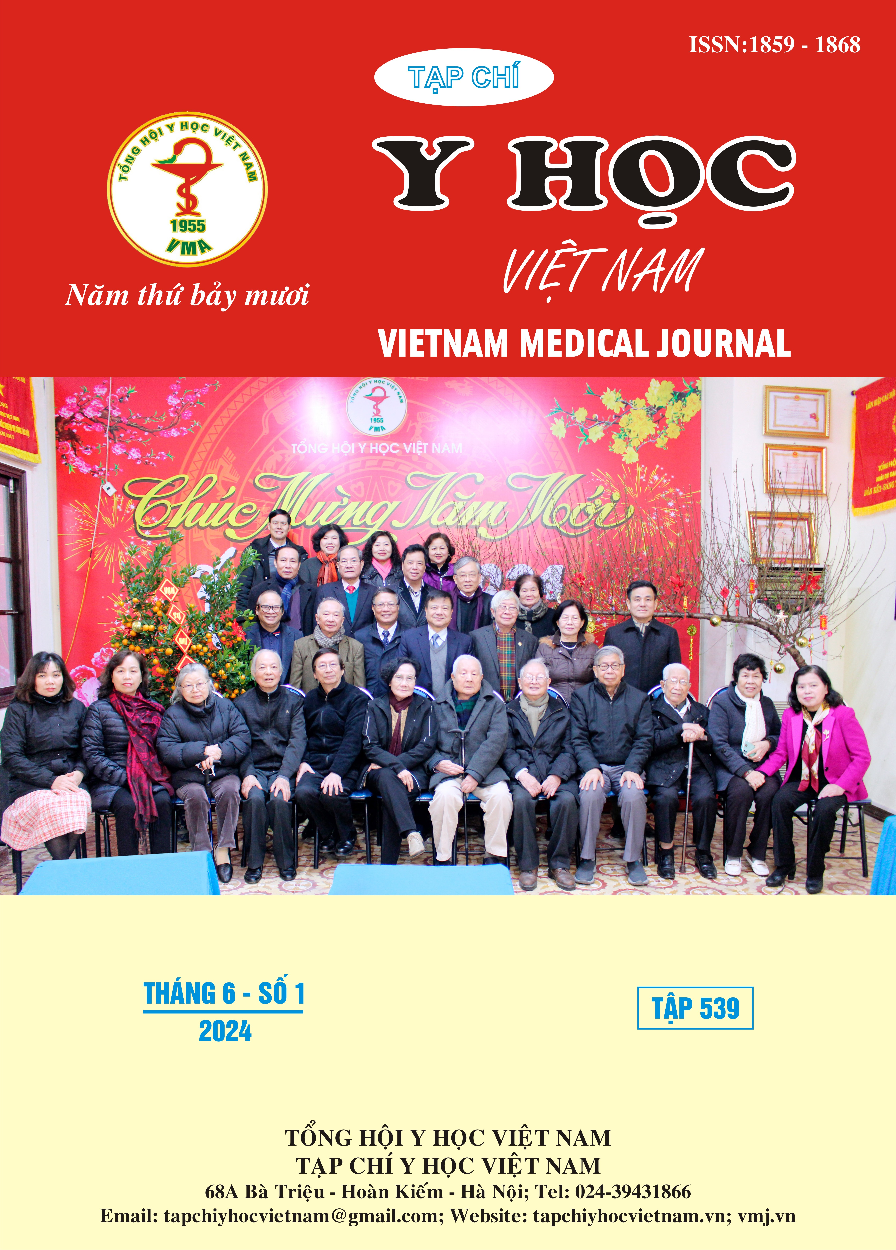THỰC TRẠNG SỬ DỤNG BÌNH XỊT DỰ PHÒNG HEN PHẾ QUẢN MDI CỦA BỆNH NHÂN HEN PHẾ QUẢN TẠI PHÒNG KHÁM KHOA NỘI 1 BỆNH VIỆN SAINT PAUL THÁNG 11-12 NĂM 2020
Nội dung chính của bài viết
Tóm tắt
Mục tiêu: Đánh giá thực trạng sử dụng bình xịt dự phòng hen phế quản MDI có corticoid của bệnh nhân hen phế quản tại phòng khám khoa Nội 1 bệnh viện Sain Paul tháng 11-12 năm 2020. Phương pháp: Mô tả cắt ngang Kết quả nghiên cứu: Đa số người bệnh hen phế quản có độ tuổi trên 70 (40%), là nam giới (58%),trong gia đình có người bị hen (70%), không có tiền sử dị ứng (62%), không mắc bệnh hen từ nhỏ (76%). Đa số người bệnh có tư thế đúng khi dùng bình xịt (96%); cách thở đúng trước khi xịt thuốc (56%); hít thật sâu, dài cùng lúc bắt đầu xịt thuốc (64%), ngậm bình xịt đúng cách (82%); xúc miệng sau khi xịt thuốc (74%). 100% người bệnh mở đóng lắp bình khi sử dụng, cầm bình đúng cách và lắc đều bình trước khi xịt thuốc. Chỉ có 5 người bệnh có thời gian nín thở đúng khi hít thuốc 10 giây (10%). Đa số người bệnh hen phế quản sử dụng bình xịt MDI có corticoid không đạt (90%). Kết luận: Đa số người bệnh hen phế quản sử dụng bình xịt MDI có corticoid không đạt (90%)
Chi tiết bài viết
Tài liệu tham khảo
2. Trường Đại học Y Hà Nội (2020).Bệnh học nội khoa tập 1. Nhà xuất bản y học
3. Centers for Disease Control and Prevention (2012), “Work-related asthma - 38 and district of olumbia, 2006- 2009”, MMWR Morb Mortal Wkly Rep, 61(20), pp. 375-8.
4. Chaari N, Amri C, Khalfallah T et al (2009), “Rhinitis and asthma related to cotton dust exposure in apprentices in theclothing industry”, Rev Mal Respir, 26(1), pp:29-36
5. Dương Quý Sỹ (2016), Sổ tay hướng dẫn xử trí và dự phòng hen phế quản, GINA
6. Phan Quang Đoàn (2011), “Một số nguyên nhân hay gặp gây Hen phế quản”, Tạp chí Y học thực hành, số 9, tr 44- 46.
7. Nguyễn Đức Thọ (2016), Nghiên cứu thực trạng và hiệu quả can thiệp truyền thông giáo dục sức khỏe đối với BPTN mãn tính tại xã Kiến Thiết và Kiến Bái thành phố Hải Phòng năm 2014-2016. Luận án tiến sĩ Y tế công công, Trường Đại học Y Dược Hải Phòng
8. Đinh Thị Thu Huyền (2020), Thực trạng sử dụng bình hít định liều của người BPTN mãn tính điều trị ngoại trú tại Bệnh viện đa khoa tỉnh Nam Định. Luận văn thạc sỹ điều dưỡng, Trường Đại học Y dược Huế


